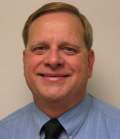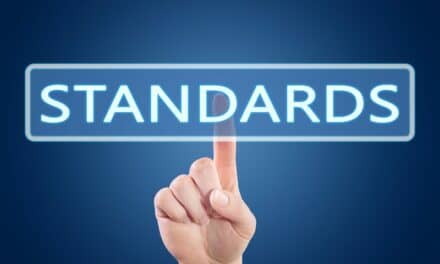Millions of people in our society are affected by obstructive sleep apnea (OSA)—the most common type of sleep apnea, according to the National Institutes of Health National Heart, Lung, and Blood Institute. It affects about 20% of the adults in the United States, and scientists believe that about 90% of people who have OSA may be undiagnosed.1 This impacts health care facilities because many of these undiagnosed OSA patients come to the facility and are sedated for surgery procedures, presenting a large number of patients who are at risk for potential injury or death.

Cliff Ratke, CBET
The health care setting during the period after surgery and recovering on the floor is one in which OSA patients have an increased risk of adverse events. This type of patient risk represents an excellent target area for efforts to improve patient safety. Respiratory therapists play a key role in improving the safety of hospitalized patients with OSA. Recognizing this, our respiratory therapy and biomedical departments at Redlands Community Hospital, Redlands, Calif, decided to be vigilant by creating ongoing solutions to serve the OSA risk patients received by our facility.
OSA Challenges
As patients with OSA risks increases, so do the challenges facing acute care facilities. Often, the obese patient arrives without a preoperative evaluation for OSA. In these cases, decisions must be made by the attending staff based on a brief clinical assessment and a verbal history from the patient and, if available, their sleep partner. When OSA is suspected, the mitigation of risk involves the judicious choice of anesthetic technique, as well as recognition of the potential respiratory side effects of commonly used pain medications. The application of a continuous positive airway pressure (CPAP) machine can be an important aspect of OSA management in hospitalized patients.
Many patients undergoing surgery may already be on CPAP therapy at home. If so, they should be encouraged to bring their CPAP devices to the hospital, along with their masks and humidifiers. Depending on the length of surgery and pain management issues, they should be closely monitored for problems, even when using their own devices with the settings used at home. Enhanced respiratory therapy coverage is aided by advanced physiological monitoring to improve patient safety. Noninvasive respiratory monitoring has many clinical advantages over invasive monitoring. It entails less discomfort to the patient, both financially and physiologically.
At Redlands Community Hospital, we have had in place an OSA monitoring program using a monitoring system that depended on the Nellcor platform. Since we were refurnishing a patient floor, we needed to use the data from the new Philips telemetry monitoring system instead. It provides real-time patient SpO2 monitoring with alarm parameters that are established by protocols.
However, we have been using the PROFOX reporting program from PROFOX Associates Inc, Escondido, Calif, for about 9 years now. This program produces reports with trending graphs and O2 calculations to analyze the need for additional therapy. We—the biomedical engineering department and respiratory therapy department—wanted to interface the Philips telemetry monitoring system with the PROFOX reporting program. This would be important to determine the need for CPAP therapy.
The Philips telemetry system does provide an HL7 output, so we went to work with PROFOX to determine what the sampling rate would be for the PROFOX program to capture the SpO2 data on the patient. We determined that a sampling rate of every 5 seconds would be just right so we would not miss any desaturation events.
Through this collaboration between the biomedical engineering, respiratory therapy, and information systems departments and PROFOX, we created a software interface with a database to capture this data so it could be retrieved in real time. This data is captured from the PROFOX 510(k)-approved reporting program from multiple locations. The reports are analyzed by the respiratory therapy staff to determine if the patient needs to be on a CPAP or other therapy during their stay at the hospital.
The use of HL7 data has been well established as a source for the electronic medical record to document patient care. Using the HL7 data from the Philips monitoring system to provide enhanced SpO2 patient reporting and records for diagnosis in this way had not been accomplished before.
This positive outcome inspires and supports the concept that when we use teamwork involving the biomedical engineering department, multiple hospital departments, as well as the outside vendors, significant functions within the health care facility can be improved. The use of available technology in this way will assist the hospital staff in the diagnosis and care of the patients that we serve. And for good reason—to protect the safety of our patients.
Cliff Ratke, CBET, has been a clinical engineering manager for more than 30 years and has also served as a safety director. He is currently the biomedical director at Redlands Community Hospital, Redlands, Calif, and is the president of the CMIA Inland Empire chapter. For more information, contact .
Reference
- Finkel KJ, Searleman AC, Tymkew H, et al. Prevalence of undiagnosed obstructive sleep apnea among adult surgical patients in an academic medical center. Sleep Med. 2009;10(7):753–758.
What’s on Your Mind?Got a gripe? A recommendation? Does someone or something deserve praise? Share your opinions and insights with your peers. Soapbox columns should be 850 to 900 words in length and can be e-mailed to . |




